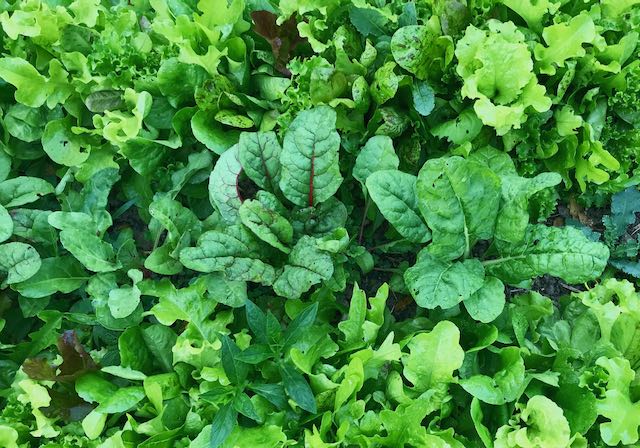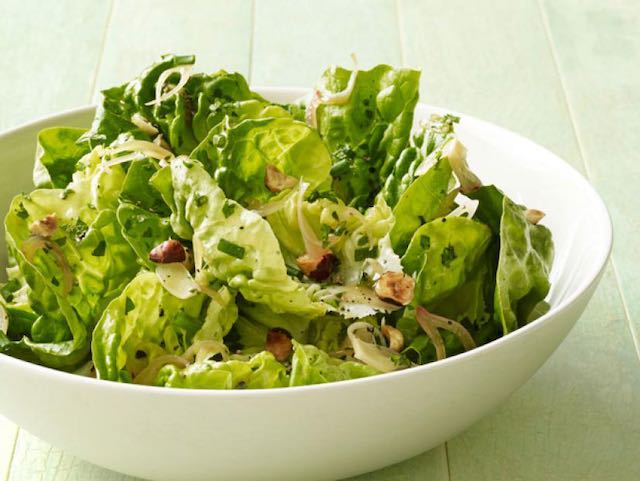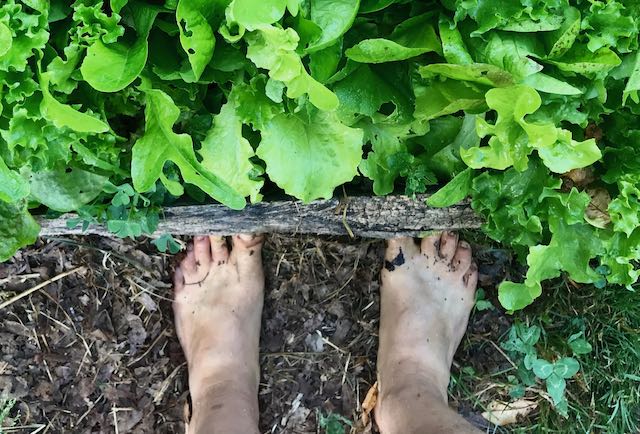Homegrown lettuce is tasty and rewarding. In fact, when you grow your own, you’ll be amazed at how much lettuce you can harvest, even from a small area. Additionally, lettuce comes in many more shapes, colors, and flavors than you’ll find at the store; growing your own will open the door to a beautiful and delicious world of diversity.
What makes lettuce great?
Compared to many other garden vegetables, lettuce can be relatively easy to grow. Indeed, it faces little in the way of pest pressure, and can thrive even in partial shade. While lettuce does well with high fertility, you can still get a good crop even if your soil isn’t supercharged.
On the table, some qualities that make lettuce so great are its versatility and crunch. A lettuce salad can be a base for all kinds of other ingredients and flavors. For example: add some shredded pork, pickled radishes, grated carrots, and a sesame dressing and you’ve got an Asian-inspired meal; top lettuce with black beans, cilantro, crumbled cheese, and a bit of salsa and voilá, taco salad! However you prepare lettuce, the crunchy freshness of this vegetable is quite satisfying.
Different kinds of lettuce
There are many different kinds of lettuce, each with many distinct varieties within the group. Lettuce is distinguished by leaf shape and growing habit. Some types of lettuce are:
- Romaine
- Butterhead
- Deer tongue
- Oakleaf
- Batavian
- Looseleaf
Along with these distinctions, lettuce can be grouped in two main categories: cutting lettuce and head lettuce. The difference here is that cutting lettuce can be grown for “cut and come again” harvest, whereas head lettuce is allowed to grow larger, and is harvested once it’s formed a single head. As a result, when you buy lettuce in the store or at the farmer’s market, you’ll get cutting lettuce as a bunch of leaves in a bag or plastic clamshell, and head lettuce as individual heads that hold themselves together. We recommend perusing seed catalogues from independent garden seed companies to find the best varieties for your conditions.
Head lettuce vs. cutting lettuce
There are advantages and disadvantages of growing head lettuce vs. cutting lettuce. Notably, cutting lettuce will be ready to harvest sooner, and will generally provide more food over the course of its growing life. On the other hand, head lettuce takes a bit longer, but will generally provide more food from a single harvest than cutting lettuce will. Also, many varieties of lettuce, like romaines and butterheads, don’t do well as cutting lettuces, but have incredible flavor and crunch. If you’ve got the space, you can grow some of both!
To get in-depth, video-based lessons on growing lettuce and over 25 other vegetables, herbs, and berries, plus great foundational gardening content, check out our Online Gardening School.


Steps to growing great lettuce
Lettuce is a cool weather-loving crop, and thrives in the spring and fall around here. Some varieties are very winter hardy, while others are better adapted to summer heat, but our tastiest lettuce is always picked when the outdoor temperatures are in the 60’s-70’s.
Whatever kind of lettuce you grow, the steps are essentially the same:
- Sow seeds. For head lettuce, it can be helpful to sow seeds in flats and transplant them out into the garden once they’re about 3 weeks old. Sowing in flats is also ideal for early spring lettuce, to prevent early bolting. Direct sowing makes the most sense for cutting lettuce.
- Keep the seeds moist and “just right” in terms of temperature. Lettuce seed will germinate at temperatures between 40-80 degrees Fahrenheit; between 65-75 is ideal.
- Transplant or thin to desired spacing (head lettuce only, cutting lettuce doesn’t usually need to be thinned)
- Keep well watered and weeded
- Harvest and enjoy!
- Resow lettuce every 3 weeks to have a continuous harvest
Here are some specific details for growing cutting lettuce and head lettuce:
How to grow cutting lettuce
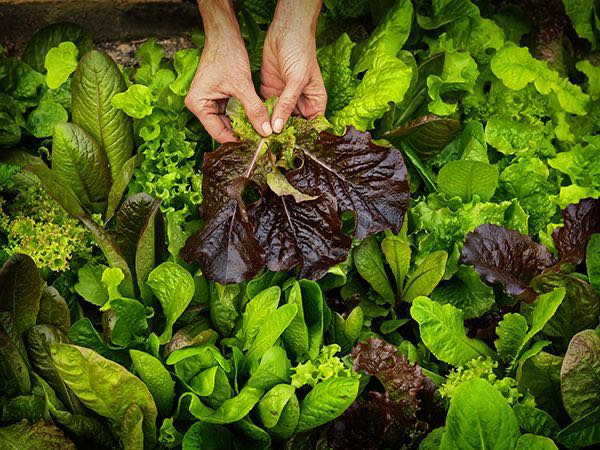

Sow cutting lettuce thickly in a three-inch swath. For cutting lettuce, direct sowing definitely makes the most sense! You can use a lot of seed; between 30-50 seeds per inch of row (remember, this is over a 3” swath). When it comes up, there’s no need to thin. Once the leaves have grown to about 3-4 inches, you can begin harvesting. To do this, either cut it back to the ground (it will likely come back for a second harvest), or harvest leaves or heads from the biggest plants to make room for the smaller ones to get big. In ideal conditions, one patch of cutting lettuce can yield for several weeks or even months.
How to grow head lettuce
Sow seeds in flats, one seed per cell. Keep them well watered; there is no need for a heat mat here, unless it’s very cold out. Once the seedlings are about 3 weeks old and around 2-3″ tall, transplant them out into the garden. Depending on the variety, space plants between 7-9″ apart, in rows that are 1′ apart. Keep well watered and weeded, and harvest once heads form (or once they get big, in the case of looseleaf lettuce, which doesn’t form distinct heads). You can maximize growing space by planting herbs like cilantro in between head lettuce rows.
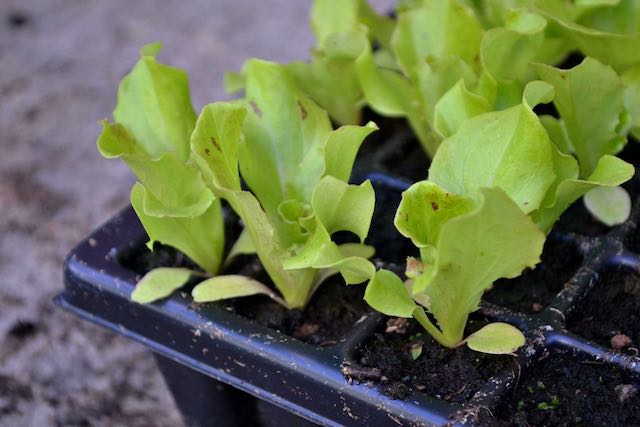

Our favorite lettuce varieties
Cutting lettuce
- Rocky Top mix
- Freedom Lettuce Gene Pool
- Summer Lettuce mix from Fedco Seeds
Head lettuce
- Optima (butterhead)
- Jericho (romaine)
- Forellenschluss (romaine)
